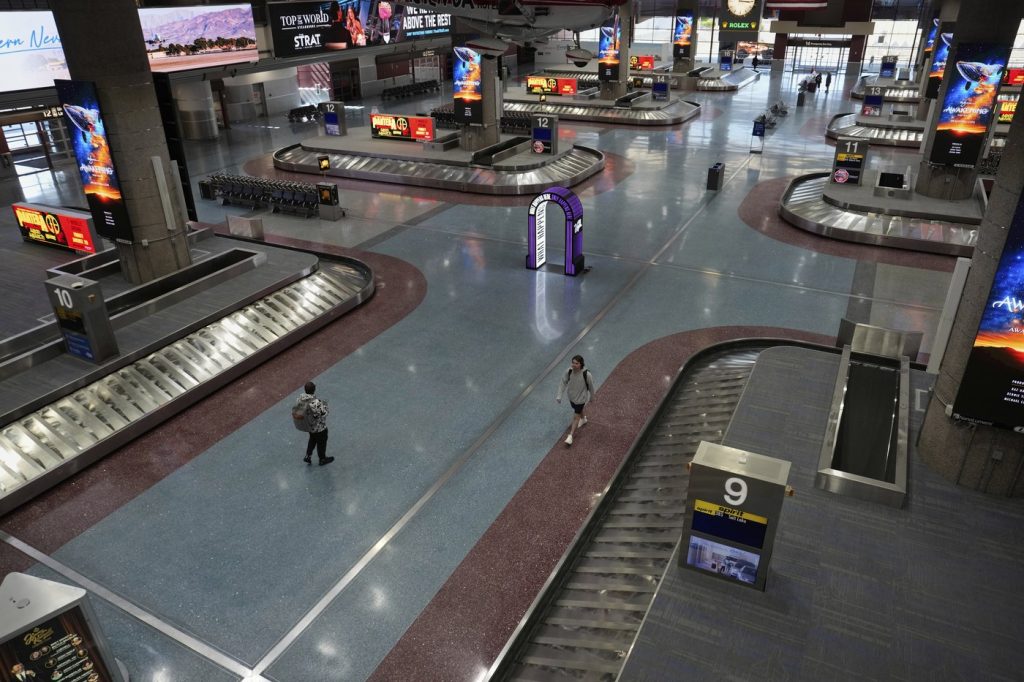LAS VEGAS (AP) — This summer, a cheerful billboard on a primary highway connecting Toronto to New York conveyed a heartfelt message to Canadian travelers: “Buffalo Loves Canada.” This marketing initiative, which featured a $500 gift card giveaway, aimed to welcome Canucks back to Buffalo, showcasing the city's desire to reconnect with its northern neighbors.
Patrick Kaler, CEO of Visit Buffalo Niagara, initially saw a promising response with over 1,000 entries in the giveaway. However, by the end of July, a noticeable absence of Canadian tourists reflected a wider downturn in international tourism to the U.S. Throughout the country, from Buffalo to major tourist destinations like Las Vegas and Los Angeles, there were reports of significant declines in foreign visitor numbers during the summer.
This phenomenon has been attributed by experts and local officials to various factors stemming from President Donald Trump's second term. His administration’s tariffs, immigration policies, and negative rhetoric about acquiring Canada and Greenland have reportedly alienated many potential international visitors. Kaler expressed disappointment over the noticeable drop in travel rates, emphasizing the challenges posed by rhetoric that could be changed.
The World Travel & Tourism Council has predicted a concerning trend for U.S. tourism, forecasting that the nation will be the only one out of the 184 countries studied to see a decline in foreign visitor spending by 2025. Julia Simpson, the council’s president and CEO, stated that the U.S. is heading in the "wrong direction" while other nations extend welcoming gestures to tourists. In a similarly disheartening report, Tourism Economics estimated an 8.2% drop in international arrivals in 2025, indicating the impact of both domestic and international sentiments against traveling to the U.S.
According to Deborah Friedland from the Eisner Advisory Group, the U.S. travel industry faces significant hurdles such as rising travel costs, political instability, and ongoing geopolitical tensions. The Trump administration has reignited strict policies reminiscent of the first term, including a travel ban affecting several countries and tightening visa regulations, which has further intensified the perception of the U.S. as unwelcoming to foreign visitors.
Some international events have also felt the effects of this perception. For example, organizers of an international swing dance competition in Harlem postponed their event due to concerns that foreign participants would feel unwelcome. Notably, a significant share of the attendees traditionally hails from Canada and France, illustrating how the climate of apprehension affects even cultural exchanges.
Washington, D.C., also reported declining international tourism, with tourism officials projecting a 5.1% drop in visitors for the year. Marketing efforts have been shifted to counteract the negative narrative by showcasing the positive aspects of the city through resident stories. Overall, U.S. government data indicates a decrease of over 3 million international visitors compared to the previous year.
While Western Europe saw a 2.3% decline in visitors, notable drops were recorded from Denmark, Germany, and France. The Asian market also witnessed steep declines, with travelers from countries like Hong Kong and the Philippines showing reduced interest in visiting the U.S. Conversely, some nations such as Argentina and Brazil recorded an increase in visitor numbers.
Despite the downturn, some destinations in the U.S. experienced a boom in local tourism. For instance, the Door Peninsula in eastern Wisconsin benefitted from a surge of Midwest visitors, leading to bustling businesses and packed restaurants. Major U.S. airlines reported increasing demand for domestic flights, with airline bookings up by about 2% compared to the previous year for the Labor Day weekend, expected to be the busiest in 15 years.
However, the impact of absent Canadian tourists remains palpable in Buffalo, which saw over 20.2 million visitors from Canada the previous year—more than from any other country. Data indicated a significant shift, with more U.S. residents traveling into Canada than vice versa for the first time in nearly twenty years, aside from the pandemic period. By July, Canadian car trips to the U.S. dropped by 37%, with a 26% reduction in air travel as well.
In response to these developments, Visit Buffalo Niagara has adjusted its marketing strategies, turning its focus toward cities like Boston, Philadelphia, and Chicago. They also leveraged amateur children's sports events to compensate for the loss of Canadian tourists. Kaler reassured that Canadians are valued beyond their economic contribution, expressing hopes for their eventual return when circumstances improve.










